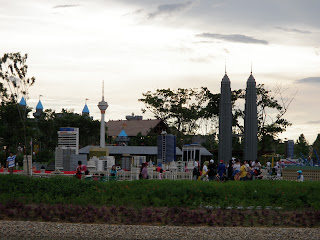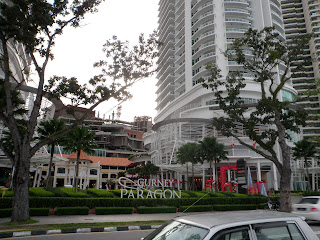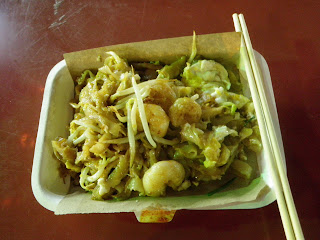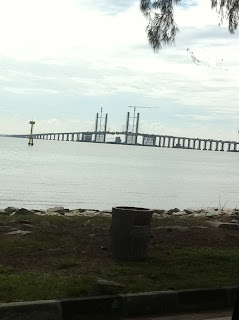Penang, Malaysia (14th to 16th December 2012)
A fascinating fusion of the East and West, Penang embraces modernity while retaining its traditions and old world charm. These are reflected in its harmonious multiracial populace and well-preserved heritage buildings which led to George Town being accorded a listing as a UNESCO World Cultural Heritage Site recently.
Long regarded as the food capital of Malaysia, Penang also entices visitors with its beautiful coasts and scrumptious cuisines.
Gurney Drive and Gurney Beach:
Gurney Drive, otherwise known as Persiaran Gurney, is perhaps one of the most well-known places in Penang. Often referred to as ‘The New Esplanade’ (to differentiate it from the original Esplanade in Georgetown), Gurney Drive is a deluge of hawker delights and exciting restaurants that come alive at nighttime, giving the unique experience of dining by the sea. Gurney Drive was named after Sir Henry Gurney, a Malayan High Commissioner who was assassinated by the guerrillas of the Malayan Communist Party during the Emergency period in the early 1950s.
Penang Bridge:
Penang 2nd Bridge (under construction):
Southbay:
Bukit Genting Hill:
This place is located on a hill called Bukit Genting in Bayan Lepas. To look for the place, just take the Jalan Bayan Lepas to reach Jalan Teluk Kumbar. On the left side of the road, look for an attractive arch entrance stated Bukit Genting Hill Leisure Park & Restaurant.
Although Bukit Genting is noticeable from afar, locating the place is a
strenuous challenge to some. It’s best to navigate your way to the peak with a
trusty GPS or a friend familiar with the area. From the hilltop, the view covers
a scenic landscape of Penang’s greenery. Cast your gaze to the sea and catch the
sunset in the distant horizon. We suggest bringing a light jacket as the weather
gets unpredictably chilly at times. If not, seek warmth at Bukit Genting Hill
Leisure Restaurant for a spicy dosage of Thai delicacies.
Literally uplifting, this hill restaurant could possibly be the gem among a sea
of Thai restaurants on the island. Besides having Penang's panoramic landscape
as a plus, this restaurant is the second reason why Bukit Genting is worthy of
an uphill drive. Spicy belacan chicken, stuffed crab shells and Thai green curry
are among the plethora of delectables you'll find in the menu and don't leave
the table without sampling their fiery seafood tom yam.
Ferringhi Area:
Georgetown:
Georgetown is the capital of the island and state of Penang. It was listed by UNESCO in 2008 as a World Heritage Site, together with fellow former Straits Settlement, Melacca
New World Park:
Campbell Street, Georgetown:
Campbell Street was named after the Penang Inspector General (1866-1891) Sir
George William Robert Campbell, who was also the acting Lieutenant-Governor of
Penang between 1872 and 1873. It used to run from Pitt Street, which was much
older. The locals called it Sin Kay, meaning "new street".
During the third quarter of the 19th century and into the 20th century, it was a
red-light district, lined with brothels that advertise themselves by hanging red
lanterns at their doors. The term "sin kay" acquired a whole new meaning, as a
pun to mean "fresh hookers", in reference to the newly arrived prostitutes, many
of whom are Cantonese. The Malays called Campbell
Street Jalan
Makau, in reference to
Macau, in reference to
the port city from which Cantonese laborers and prostitutes arrive.
In
the mid 20th century, Campbell Street had become the most important shopping
street for the locals. It is the place to shop for clothes, watches
and shoes. The business began to decline by the mid 70's. Today most of the
retail outlets have been taken over by wholesalers. The eastern end of Campbell
Street, between
Rope Walk and
Carnarvon Street, was the centre of the Chinese jewellery business, with
jewellery shops lining both sides of the street.
Medan Lebuh Campbell is the RM2.3 million pedestrian walkway built by the
Penang Island Municipal Council (MPPP), as part of the effort to bring life into
Campbell Street.
Red Garden Food Paradise:
Located right smack in the middle of the town sits Red Garden Food Paradise
where it is a One Stop Penang International Hawker Centre offering
all of Penang's famous fares.
Cheong Fatt Tze Mansion
Built in the 1890s, and restored in the 1990's (earning it an UNESCO award in 2000), this indigo-blue Chinese Courtyard House in George Town was the main residence of Cheong Fatt Tze, known as the 'Rockefeller of the East' and 'J.P. Morgan of China'. Cheong was a prominent, successful Hakka Chinese merchant who demonstrated his business ability after marrying into a wealthy family, founding the Chang Yu Winery and ending the segregation of Chinese from Europeans on passenger ships. The mansion was built according to feng shui principles by master craftsmen brought in from southern China, who used their skills to fashion a sprawling mansion with 38 rooms, 5 granite-paved courtyards, 7 staircases, and 220 windows. The mansion features in various films including the 1993 Oscar-winning Indochine. Tours: 11AM, 1.30PM and 3PM sharp (RM12, 60-90 mins)
Padang Kota Lama (Esplanade Penang):
Fort Cornwallis
-The fort, named for Charles Cornwallis is built on the site where Captain Francis Light, founder of Penang, first landed on August 11, 1786. It was first built in 1793. But this site was an unlikely spot to defend the city from invasion. In 1810 it was rebuilt in an attempt to make up for initial strategic planning errors. In the shape of a star, the only actual buildings still standing are the outer walls, a gunpowder magazine, and a small Christian chapel. The magazine houses an exhibit of old photos and historical accounts of the old fort.
-One of the most famous historical landmarks in Penang, Fort Cornwallis is the largest standing fort in Malaysia today. Situated at the northeast coastline of Penang Island in Georgetown, it was named after the Governor-General in Bengal, Charles Cornwallis (1738 – 1805).
Penang City Hall:
Penang Museum:
Convent Light Street, Georgetown:
The
Convent of the Holy Infant Jesus, universally known as
Convent
Light Street, is the oldest girls' school in Penang as well as in Malaysia.
Often called Town Convent (to differentiate it from the one in Green Lane, Pulau
Tikus, Balik Pulau and Butterworth), it was founded by three French nuns of the
Holy Infant Jesus Mission, Sister Gaetau, Sister Appolinaire and Sister
Gregoire, who arrived in Penang in 1852. It was a perilous sea journey in which
their Mother Superior did not survive. In Penang they were joined by Reverend
Mother Mathilde Raclot, who is credited as founder of the over 80 convent
schools in Malaya, including
CHIJMES of
Singapore.
St. George's Church
It is named after the patron saint of England. Built by convict labour in 1818, it is the oldest Anglican Church in South-East Asia. The building was designed by Captain Robert Smith, a military engineer whose oil paintings of early Penang can be seen in the Penang State Museum. A memorial in the form of a Greek temple with a marble slab dedicated to Captain Francis Light, stands in the grounds of the St. George's Church.
Formerly functioning as light house for Fort Cornwallis:
Francis Light and the Clock Tower:
(Founded in 1786 by British trader Francis Light, Georgetown was one of the three Straits Settlements along with Malacca and Singapore. Modern-day Georgetown is one of Malaysia's largest cities with 600,000 inhabitants)
Queen Victoria Clock Tower
(At the Intersection of Light Street, Beach Street, Fort Road and King Edward Place). The 60 ft high clock tower was presented to Penang by local millionaire Cheah Chen Eok in 1897 to commemorate the Diamond Jubilee of Queen Victoria.
Church Street Pier:
The Church Street Pier is a heritage pier on the
George Town
waterfront. For many years it was a run-down, abandoned pier, but recently it
was refurbished.
Built in 1897, the Church Street Pier hails from a more
romantic era when the Penang Channel was a much busier waterway. You can stand
on the pier and imagine the waterfront choked full with sampans, perahus, junks,
steamships and cruise vessels of varying sizes. Today the scene at the harbour
would seem more orderly and perhaps less picturesque.
Straits Times travel article on 30/7/2013:










































































